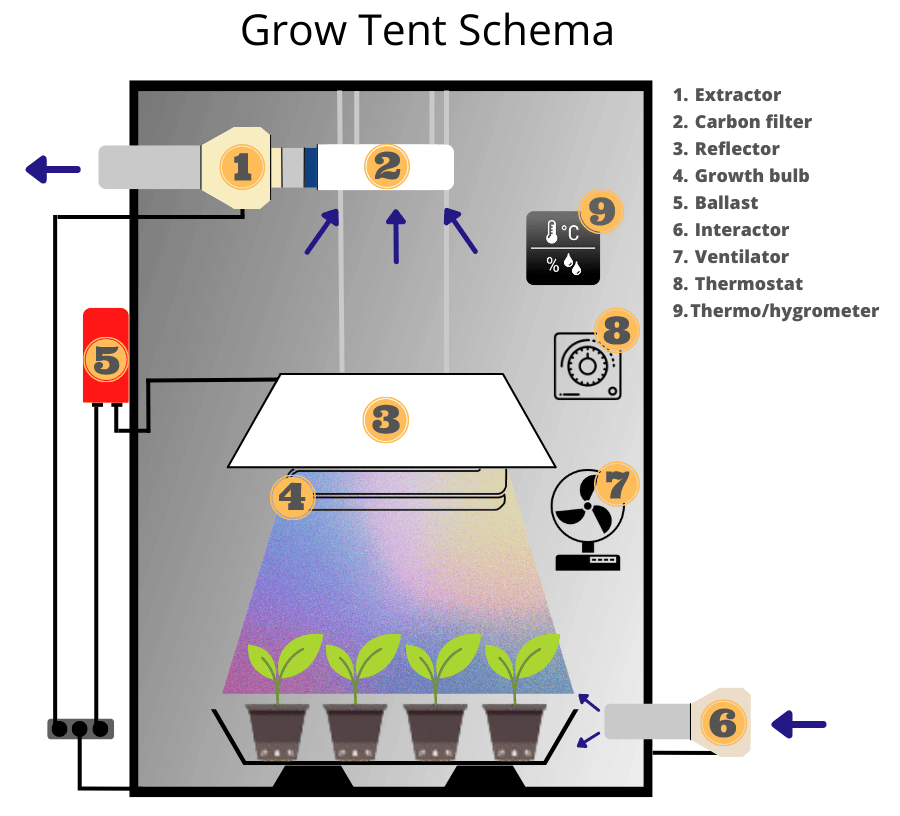If you love growing plants, or just want to grow your own food, you may have heard about hydroponics or aeroponics systems. Aeroponic systems are a popular way to grow plants indoors. They offer many benefits over other types of indoor gardening systems. They use nutrient-rich water instead of traditional soil to grow food.
In my opinion, by using this system, you can grow plants in a much smaller space than a traditional garden. And not surprisingly, Aeroponic systems are quickly becoming a popular choice for indoor gardeners.
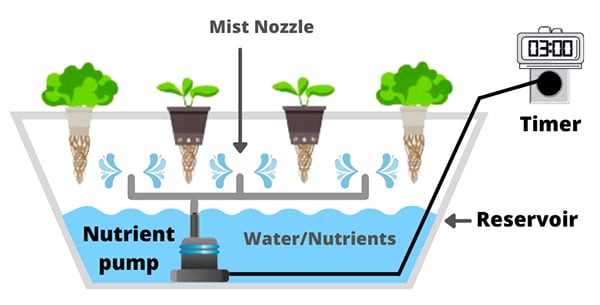
This makes it great for people living in small homes or for people who lack outdoor space. Since many are designed to be used indoors, this means you can grow food year-round even if the weather is poor. When picking a system, you need to keep in mind your space and how much effort you can put into creating your growing system.
 Before you start growing with cool Aeroponics Systems, you’ll need to know about alternative hydroponics systems to start with. Here are our suggestions: Picks for the 5 Grow Tent Kits, Our Picks for the 5 Hydroponic Towers in 2021, Our Picks for the 5 Hydroponic Bucket Systems with Buyer’s Guides, and Led Grow Lights for an indoor plant, and The Best Hydroponic Tower for Indoor Garden. .
Before you start growing with cool Aeroponics Systems, you’ll need to know about alternative hydroponics systems to start with. Here are our suggestions: Picks for the 5 Grow Tent Kits, Our Picks for the 5 Hydroponic Towers in 2021, Our Picks for the 5 Hydroponic Bucket Systems with Buyer’s Guides, and Led Grow Lights for an indoor plant, and The Best Hydroponic Tower for Indoor Garden. .
Aeroponics Grow Systems, comparison chart
| Image | Product | |
|---|---|---|
Best Choice  | AeroGarden Harvest Indoor Hydroponic Garden
| Check Price |
Best Smal  | AeroGarden Bounty Indoor Hydroponic Garden
| Check Price |
Best Vertical 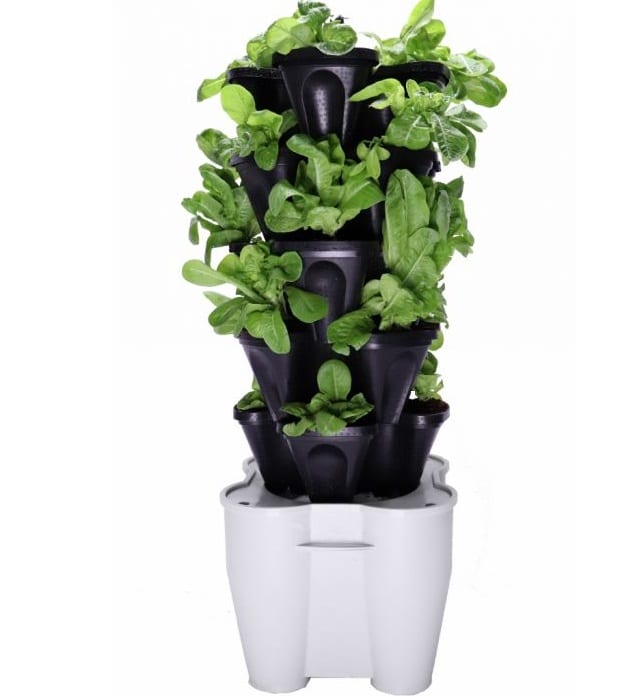 | Mr. Stacky Smart Farm
| Check Price |
Best Family 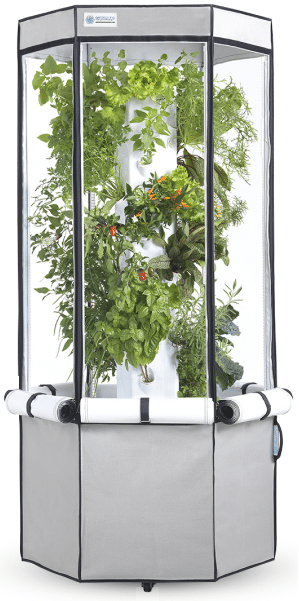 | Aerospring 27-Plant Vertical Hydroponics Or An Aeroponics Indoor Growing System
| Check Price |
Best PVC 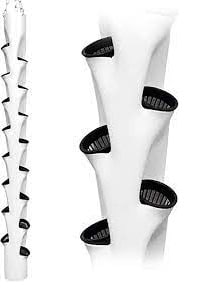 | PVC Vertical Grow Tower Add-on for Hydroponics
| Check Price |
If you are considering purchasing an aeroponic system, or if you have one and want to get the most out of it, this guide is for you! In this article, we will answer common questions about aeroponic systems and provide product reviews and useful tips.
1. AeroGarden Harvest Indoor Hydroponic Garden | Best Simple Aeroponics Systems

The AeroGarden Harvest is a good option for people who don’t have much space. It takes up about as much space as most small appliances. This makes it perfect for those in apartments. It can grow up to 6 plants in that space, so long as the plants don’t get taller than 12 inches in height. You can use any of the pods from AeroGarden if you don’t like one of the options they include. AeroGarden even makes a kit that lets you grow your own seeds.
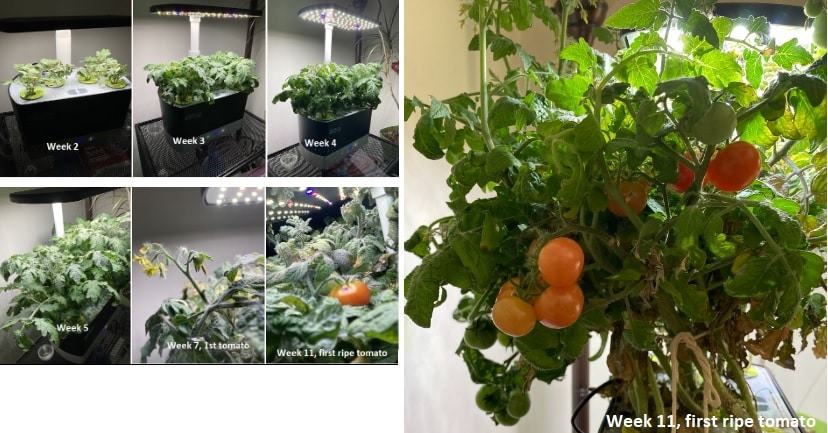
Image 1: Aeroponic system, AeroGarden Harvest Indoor example of growing cherry tomatoes in 11 weeks in a room
The biggest issue seems to be problems with pods not sprouting. Many people have had issues with the included pods never germinating. This could be due to the kit has been on shelves for too long. AeroGarden will replace pods if they don’t sprout after 3 weeks. There have also been complaints about how bright the lights are. This is required for plants to grow well indoors. You can set up your AeroGarden in another room if the light is disturbing you. You could also get a box or blackout material like some indoor growing kits have to help hide the harsh light. Overall, this is a great option and comes highly recommended if you want to use a simple system. AeroGarden has been around for a long time, so you should have no problems getting more pods after your first harvest is finished.
| Pros | Cons |
|---|---|
| All-in-one unit | Can only grow shorter plants |
| Includes everything you need, just add water and plug it in | |
| Comes with enough plants to fill it | |
| Plenty of other pod options if you want a variety |
2. AeroGarden Bounty Indoor Hydroponic Garden | Best Small Indoor Option

The AeroGarden Bounty is an upgrade to the Harvest. It gives you 3 more spaces for plants, taking your total up to 9 plants in a unit that is just a bit larger. This makes it great for larger families or people who find they eat more veggies when they grow them themselves. This model allows plants up to 24 inches, so you have more options for plants. It even includes a 6-inch trellis for plants that need support. This model is wifi enabled so you can control it from a distance. You can also dim the lights or set it on vacation mode so you don’t need to worry about it for a few days.
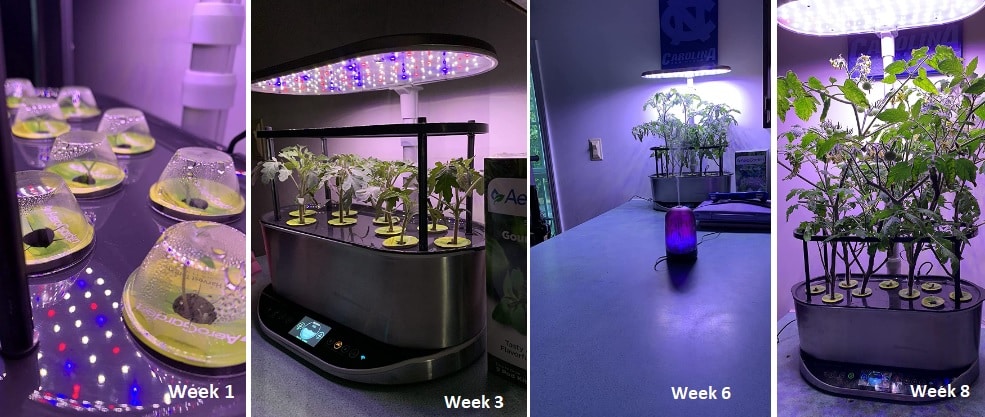
Image 2: Aeroponic Growing System, AeroGarden Harvest Indoor example of growing in 8 weeks on the kitchen table, in the shade.
The biggest issue with this unit seems to be that customer service isn’t the best, and that the light is disruptive. Using a reflective screen or even aluminum foil can help block the light from you and help your plants grow better. Many indoor aeroponic kits meant for serious gardeners or businesses use a reflective cover to help plants grown better. Customer service can be lacking. If your seed pods don’t germinate or the light fails, you may have difficulties getting help or replacements. You can deal with the seed pod issue by using the grow anything kit and your own seeds. This might also be cheaper in the long run since the pods can be expensive. Overall, this is recommended. Most owners love the simplicity and ease of use. If you want a killer gift or just want the best start to your garden, this is a great option.
| Pros | Cons |
|---|---|
| All-in-one system | Very bright light can be disruptive |
| Hassle-free even for those with a black thumb | Customer service is poor |
| Plenty of space for plants | |
| WiFi-enabled to make controlling it even easier | |
| Comes with everything you need |
3. Mr. Stacky Smart Farm | Best Vertical Aeroponics System.

The Mr. Stacky Smart Farm is a great system to use if you only have a small amount of outdoor space you can use. You can grow up to 20 plants in a space that is only 18.5-inches by 18.5 inches in size. It has a pump and a large capacity so all you need to do is fill it up and let it run. It should last for about 2 weeks before you need to refill it. This system even allows some rooted plants like beets to be grown. This gives you more flexibility so you can grow more varieties of plants. You need to provide your own plants and growing medium, but the system has everything else including plant food.

Image 3.1: Aeroponics growing system, Mr. Stacky Smart Farm is an example of growing different plants in two seasons, outdoors in summer and indoors in winter.
One issue right off the bat is that this system isn’t great for indoor use. It would require a separate lighting system if used indoors unless you have plenty of light. Some have used it indoors, but it heavily depends on the plants it seems. It would also be harder to clean out since the large water capacity makes it heavy when filled up. You also need to watch out for clogging of the pump thanks to your growing medium slipping into the reservoir.

Image 3.2: aeroponics kit, Mr. Stacky Smart Farm is an example of growing different plants.
Overall, this is a great option for an outdoor garden if you want a vertical aeroponics system. It would be hard to move around once full, but you can easily rotate the tower to help your plants get the right amount of sunlight.
| Pros | Cons |
|---|---|
| Easy system to use | Heavy and not the best for indoors |
| Has everything aside from plants and growing medium | Hard to check water and nutrient levels |
| Grows a large number of plants in a very small space | |
| The large reservoir allows you to leave it be |
4. Aerospring 27-Plant Vertical Hydroponics Or An Aeroponics Indoor Growing System | Best Indoor System

The Aerospring is the top-of-the-line indoor growing system. You can position it outdoors, but you can easily add the accessories to make it into an indoor growing system. While it would be a bit difficult to grow larger plants like many tomatoes, it is possible with some effort. It has space for 27 plants and can grow nearly anything that isn’t a root vegetable or a tree. Otherwise, this would work great for plants like salad greens and herbs. The panels it is surrounded with help reflect light to help your plants grow faster and keep you from dealing with bright lights. It is Wifi enabled and can be controlled with an app.

Image 4: aeroponic grow systems, Aerospring 27-Plant indoor Growing System aeroponics garden example of growing lettuce, tomatoes, and herbs in the lobby.
The big issues are the timers being a bit faulty and not being able to start from seed in the tower. The timers have been noted as frequently failing, but customer service is great and you can even replace them with timers you prefer if you like. You also need to use seedlings or older plants for this unit. The lights are too far away for germinating seeds. You will also need to provide the growing medium and plants with this unit. Otherwise, this is an amazing product even considering the generally high price. Customer service is responsive and there is a big community to help you should you need it. Many customers end up buying multiple units, which should say everything you need to know about the quality.
| Pros | Cons |
|---|---|
| Unit grow lots of plants in a small space | Timers can fail |
| Allows you to grow some larger plants with ease | Need to provide your own plants and growing medium |
| The cover helps block light from leaking out | |
| The unit is very quiet | |
| Customer service is amazing |
5. PVC Vertical Grow Tower Add-on for Hydroponics | Best Addition for Systems
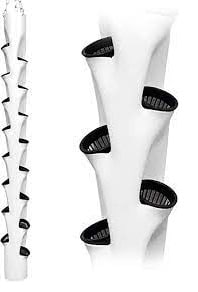
This is a PVC tower meant to add additional growing space for an aeroponics system. It comes in either a 16 or 20-plant option. These are meant to be hung up as part of a hydroponic system. It would work well for anyone who has a pre-existing system and pump that they can add this to. You could also use this as the base for your system using a bucket system or the other options the manufacturer notes. You would just need a pump that can reach up at least 6 feet. Many pumps are meant for horizontal pumping, so be sure yours is rated for vertical distance. It comes with reusable plant pots that you fill with a growing medium. Just be sure you clean these thoroughly between crops.

Image 5: PVC Vertical Grow Tower in Grow Tent Kit example of aeroponic grow systems indoor.
Obviously, this option takes more effort on your part than the other options on this list. However, if you are looking to expand your system, this is a great option that doesn’t take up much space. It also can’t grow root vegetables, but that is an issue with many similar hydroponic or aeroponic systems. Another issue is that it leaks. This can be fixed by sealing it, but it does mean your system might lose more water to evaporation than is normal. This can drive up your costs for using this unit. It is also an awkward size that won’t fit most standard PVC fittings. This can make it hard to alter to fit into other systems.
| Pros | Cons |
|---|---|
| The pre-made tower that can be hung up | Harder to use than other options |
| Reusable pots | Leaky |
| Maker is very helpful | Won't fit standard PVC fittings |
Best Aeroponics System – Buyer’s Guide

When it comes to hydroponics or aeroponics systems, there are a few things you need to know when deciding on a system for you. The first is how much you want to grow. If you just want enough herbs for the occasional dinner, a small countertop model like the AeroGarden is great. If you want to grow your own salads and have cheap, fresh produce year-round, you will want a larger system.
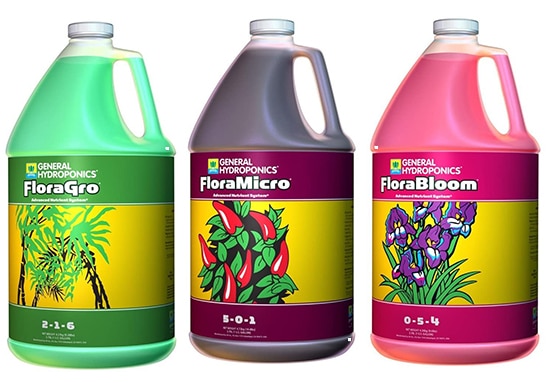 General Hydroponics Flora Grow, Bloom, Micro Combo Fertilizer, 1 gallon (Pack of 3)
General Hydroponics Flora Grow, Bloom, Micro Combo Fertilizer, 1 gallon (Pack of 3)
- Сomplete nutrient system
- Highly purified concentrates for maximum solubility
- NASAAntarctic research scientists choose flora series!
Next, determine how much effort you want to put in. Making your own system is cheaper in the long run and more expandable, but it requires more effort and knowledge from you. If you want a system that is easier to forget, look for one with smart controls and a system to remind you of when to add nutrients. These are more expensive but also easier to deal with for those who aren’t great with plants.
Finally, determine how much space you have for your unit. You may have to compromise since you don’t have enough space or outlets to run the systems you would like.
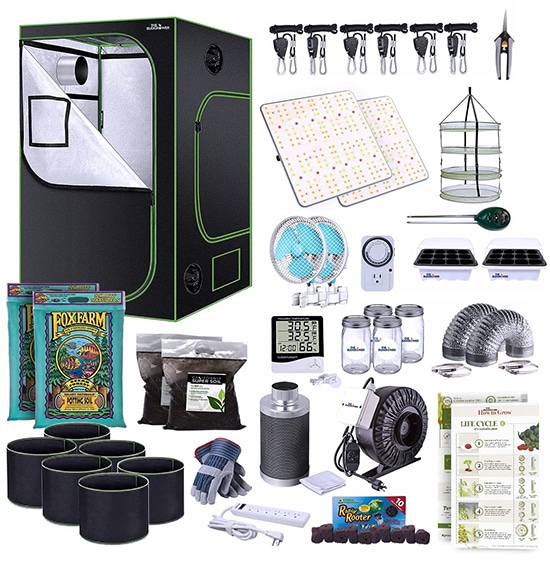 TheBudGrower Complete All-in-One Home Grow Solution 4x4x7ft- 2200W(2)
TheBudGrower Complete All-in-One Home Grow Solution 4x4x7ft- 2200W(2)
- LED lights specialty manufactured by VIVOSUN with Samsung LM301 diodes for FULL spectrum light
- The industries most durable grow tent – heavy duty 1680d oxford cloth
- Money & energy saving complete home grow tent kit
I can recommend this article to read about How To Measure Grow Light with A PAR Meter also in Grow Room.
Tips Aeroponic Grow System
Here are some tips for an aeroponic grow system:
- Maintain a sterile environment: Since aeroponic systems expose plant roots to air and mist, it’s important to maintain a sterile environment to prevent the growth of harmful bacteria and fungi. Use sterilized equipment and regularly clean and disinfect the system.
- Monitor and adjust pH and nutrient levels: Aeroponic systems require precise pH and nutrient levels for optimal plant growth. Monitor these levels regularly and adjust them as necessary.
- Ensure proper misting and airflow: Misting is essential in aeroponic systems to deliver nutrients and moisture to plant roots. Ensure that the misting nozzles are working properly and that there is adequate airflow to prevent stagnant moisture.
- Choose appropriate plants: Certain plants, such as lettuce, herbs, and strawberries, are well-suited for aeroponic systems. Choose plants that have a high tolerance for fluctuating water and nutrient levels.
- Be mindful of temperature and humidity: Aeroponic systems can be sensitive to changes in temperature and humidity. Maintain a temperature range of 65-75°F and a humidity level of 40-60%.
By following these tips, you can successfully grow plants in an aeroponic system and enjoy the benefits of this efficient and space-saving method of cultivation.
5 Popular Mistakes Aeroponics Grow Systems
- Not maintaining a sterile environment: As mentioned earlier, it’s crucial to maintain a sterile environment to prevent harmful bacteria and fungi from taking over the system. Neglecting to do so can lead to plant diseases and reduced yields.
- Allowing the roots to dry out: Since aeroponic systems expose plant roots to air and mist, it’s important to maintain the proper moisture levels. Allowing the roots to dry out can cause stress to the plants and ultimately lead to their demise.
- Neglecting to monitor pH and nutrient levels: Aeroponic systems require precise pH and nutrient levels to support optimal plant growth. Neglecting to monitor and adjust these levels as needed can lead to nutrient deficiencies or toxicities.
- Overcrowding the system: While it may be tempting to maximize space in an aeroponic system, overcrowding can lead to reduced yields and unhealthy plants. Make sure to leave adequate space between plants and ensure that they have access to sufficient nutrients and moisture.
- Ignoring temperature and humidity levels: Aeroponic systems can be sensitive to changes in temperature and humidity. Ignoring these factors can lead to stressed plants and reduced yields. Make sure to maintain the proper temperature and humidity levels within the system.
By avoiding these common mistakes, you can increase your chances of success in growing plants with an aeroponic system.
Final Thoughts about Aeroponics Systems
I think aeroponic systems are a highly efficient and space-saving method of growing plants. By misting plant roots with a nutrient-rich solution, aeroponic systems allow for faster growth and higher yields compared to traditional growing methods.
To ensure success with an aeroponic system, it’s important to maintain a sterile environment, monitor pH and nutrient levels, ensure proper misting and airflow, choose appropriate plants, and be mindful of temperature and humidity levels.
In my opinion, it’s also important to note that aeroponic systems can be more complex and require more attention than other growing methods. They also come with a higher initial cost and require ongoing maintenance to ensure their longevity.
Overall, if you’re willing to invest the time and effort into an aeroponic system, the benefits can be well worth it. With the potential for faster growth and higher yields, aeroponic systems offer an exciting option for growers looking to maximize their space and resources.
FAQ
What are the benefits of a hydroponics or aeroponics system?
An aeroponic system has many benefits over growing in soil. For one, you control exactly what nutrients your plants receive. They also don't need to fight to get them from the soil, so they frequently grow more quickly. Growing hydroponically also saves water since the plants only take what they need and you don't lose water to it seeping deeper into the soil. You also don't need to worry about weeding.
Are hydroponically grown plants healthy and nutritious?
Yes, so long as the levels in the water are kept up. They are just as good for you as plants grown in soil. You can even make sure your plants have plenty of the nutrients you want in your final product.
Will I need to add nutrients?
Yes, you will need to add nutrients. Aeroponic systems rely on nutrients added to the water rather than the soil. It gives you more control over what your plant gets. You can customize your water for the plants you grow.
What do I need to grow hydroponic or aeroponic plants?
At the least, you need some way to hold your plants, give them the nutrient-filled water, and a pump on a timer to ensure the water and nutrients are circulating.
Can I grow multiple types of plants in one system?
Much like planting in soil, so long as the plants all have similar nutrient, pH, and temperature needs, they should grow well in one system. At worst, they may grow a bit more slowly if two of the plants have different needs. In that case, you may want another system to expand the number of crops you can grow. You can experiment with this as you gain experience.
Do I need any additional equipment?
This depends on your system. Read the reviews and product description to know what they include. At the least, you need to test the pH and nutrient content of your water. The kits for this are very cheap, and you don't need to test that often once you know what your system requires.
What can I grow?
Many plants do very well in a hydroponic system. Herbs and salad greens are some of the most common options. Strawberries also do well, though you should plant runners instead of seeds. Tomatoes, cucumbers, and peppers can also do well. Look for plants with shallow root systems that don't need much support or grow very high. If there is a specific plant you want to grow, look into what it will take. AeroGarden has packs of different plants matched by culinary use, such as herbs or a salsa garden. You can use these to get ideas on what to plant. There are plenty of options, just watch the pH and temperature as well as your nutrient levels. Every plant has its own needs. Match up your plants based on what they require to get the best yield from your system.
What can't I grow?
This will depend on your system. You can't grow trees like this for a start. Many systems also can't handle root vegetables since there isn't enough space and many root vegetables also need to dry out, so they may not work well. Many systems can't handle things like garlic or onions. Some crops like corn and vine plants are difficult or even impossible to grow. Look into your intended crops before you try planting them and waste a space that could be producing for you. If you have space, you could always experiment so long as you know it might not succeed.
Any other tips for success?
Besides watching for the basic growing conditions, you should also be sure to prune your plants well. In small spaces, they may crowd one another and compete for light. You will also want to keep crops like peppers short to encourage a bigger yield. Look up tips for the plants you are growing for the best results.
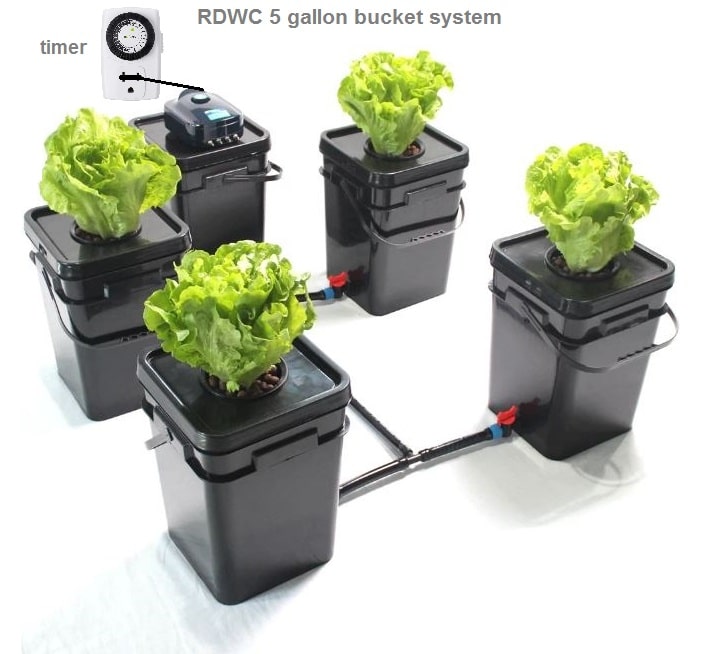
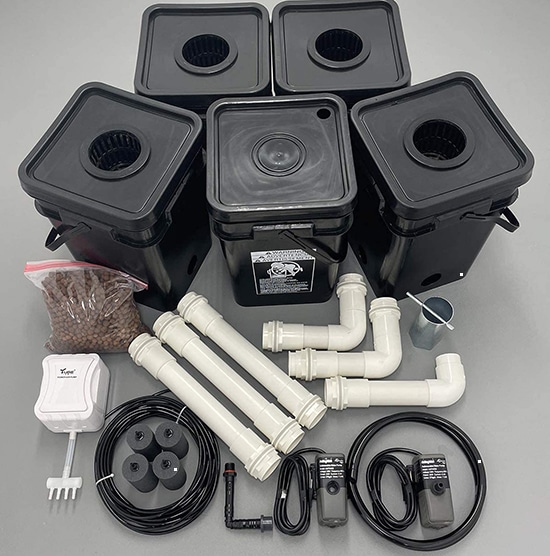 Recirculating Deep Water Culture (RDWC) Hydroponic Grow Kit System
Recirculating Deep Water Culture (RDWC) Hydroponic Grow Kit System
- Reservoir Bucket Connected to 4 Grow Buckets
- 400 Gallon/hour Circulating Pump
- Large 5 gallon square buckets, pre-drilled
